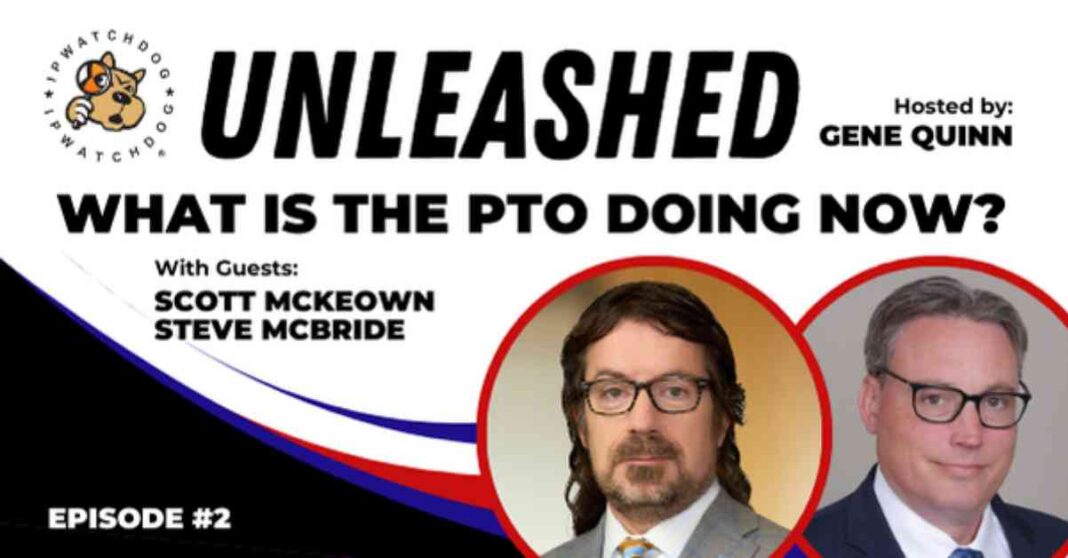This week, we had a conversation with Scott McKeown from Wolf Greenfield and Steve McBride from Carmichael IP regarding the latest updates from the United States Patent and Trademark Office (USPTO). We delved into various topics, including the proposed changes to terminal disclaimers for obviousness-type double patenting, the proposed rules by the Patent Trial and Appeal Board (PTAB), and director review concerning inter partes review (IPR). Additionally, we touched on pending legislation on Capitol Hill, such as the Patent Eligibility Restoration Act (PERA) and The Promoting and Respecting Economically Vital American Innovation Leadership Act (PREVAIL), which focus on statutory reforms to PTAB.
The conversation began with a discussion on double patenting and terminal disclaimers. Patent attorney Gene Quinn expressed confusion about the origins of these rules and their purpose, highlighting the goal to make it more cost-effective and easier for entities to challenge patent claims. The underlying reason behind these changes was speculated to be related to concerns about patent litigation, patent thickets, and pharmaceutical industry practices like evergreening. The Biden administration’s potential involvement in addressing drug pricing was also mentioned, although the direct impact on drug prices was questioned.
Moving on to the proposed PTAB rules, the focus shifted to the criticism surrounding the separation of briefing on discretionary denial. McBride raised concerns about the limited space given to patent owners to address discretionary denial issues, particularly in comparison to the substantial room petitioners have in the preliminary response. The imbalance in the process was highlighted as a potential drawback, with McKeown acknowledging some value for petitioners but recognizing the increased burden on patent owners.
The discussion underscored the challenges and controversies surrounding these proposed changes, with a call to reconsider the impact on both petitioners and patent owners. The nuances of the rules and their potential implications for the patent system were thoroughly examined, shedding light on the complexities of navigating patent law in the current landscape.
In conclusion, the conversation provided valuable insights into the evolving dynamics of patent regulations and the potential consequences for stakeholders in the innovation ecosystem. The need for a balanced approach that considers the interests of all parties involved was emphasized, reflecting the ongoing dialogue and debate within the intellectual property community.
For more in-depth insights and analysis, you can listen to the full podcast to delve deeper into the intricacies of the USPTO updates and the broader implications for the patent landscape.















